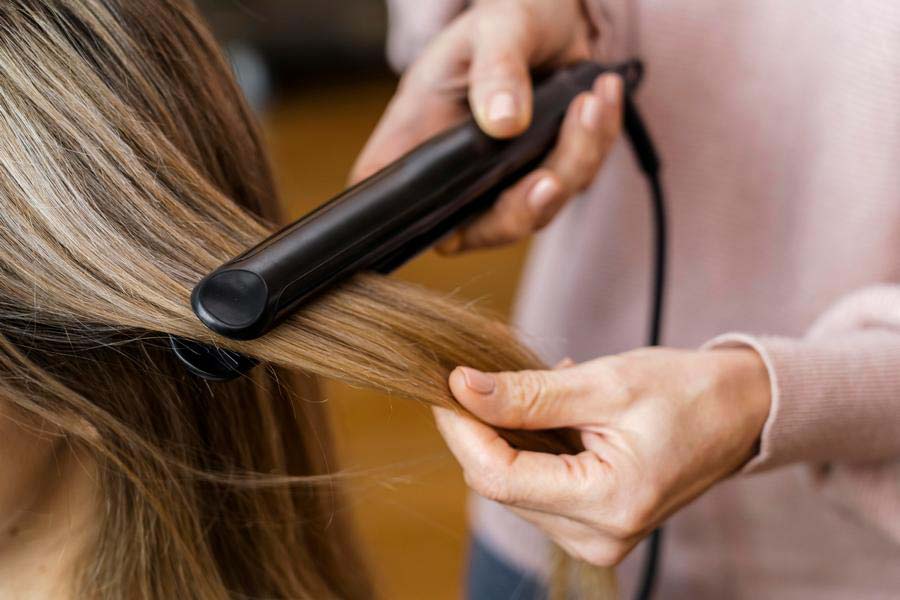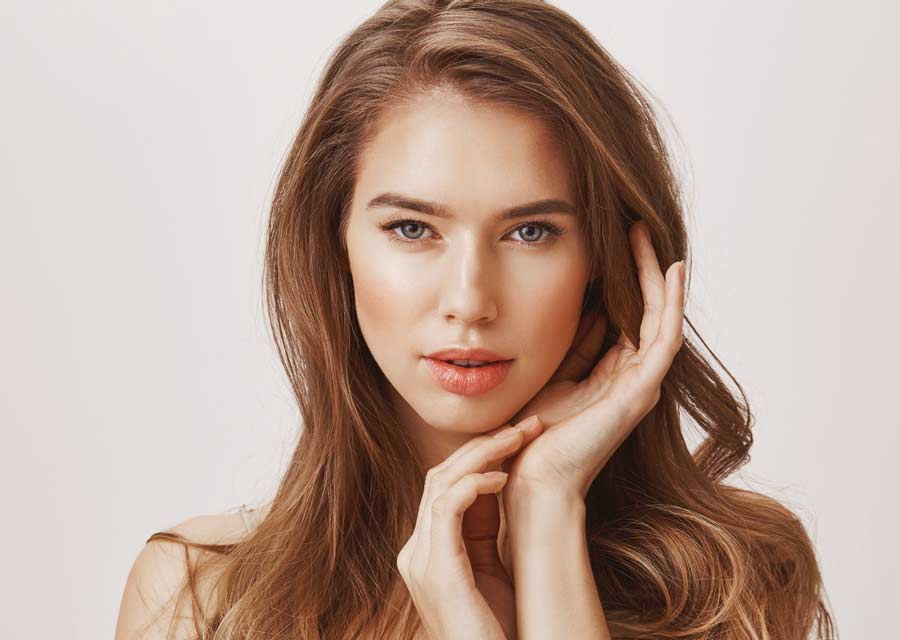In This Article:
- Why Do You Need Heat Protection for Your Hair
- How to Choose Thermal Protection for Hair
- How to Use Thermal Protection Correctly
It cannot be said that the fashion for using electrical devices for styling hair appeared recently. Styling women’s hair has always been popular. But there has never been such a variety of thermal devices for hair as there is now. All these curling irons, stylers, flat irons, and electric combs help women look their best, but they can damage the hair. Using these electrical appliances without proper protection can lead to hair breakage, dryness, and loss of shine. Therefore, thermal protection becomes an integral part of the daily care ritual. In this article, together with Herbzone, we will consider how to choose thermal protection for hair and what components should be in its composition.

Why Do You Need Heat Protection for Your Hair
When we accidentally touch the hot surface of the iron while ironing, it hurts a lot and even burns our hands. So why do we think that the high temperatures of hair irons do not harm our hair? Especially if exposure to high temperatures occurs regularly, for example, every day.
Now you understand why you need heat protection for your hair? It creates a barrier between the hair and the heat source, minimizing damage from high temperatures. This is especially important for those who regularly use heat devices for hair styling.
Without proper protection, hair can become brittle, dry, and lose its natural shine. Thermal protection products help retain moisture inside the hair, preventing it from drying out.

How to Choose Thermal Protection for Hair
Thermal protection products can come in the form of sprays, creams, serums, and oils. And we don’t always know which type is right for our hair. It is also important to know what composition should be in thermal protection in order to choose the right product. We will talk about all this later and provide answers to these questions.
Types of Thermal Protection Products
There are several types of heat protectants, each of which has its own characteristics and is suitable for different types of hair and styling:
- Sprays. Easy to use and suitable for all hair types. They should be applied to wet or dry hair before styling.
- Creams and Lotions. More suitable for dry and damaged hair. They nourish and moisturize the hair, making it soft and silky.
- Serums and Oils. Ideal for dry and curly hair. They create a protective film and keep moisture inside the hair.
The Main Components of Thermal Protection
For a heat protectant to be effective, it must contain certain ingredients. And these are not only silicones, which are considered the main protection for hair when using electric thermal devices. Here are some of them:
- Silicones. These components create a protective film around each hair, reducing moisture loss and protecting against thermal effects. The most common types of silicones in heat protectants are dimethicone and cyclomethicone.
- Proteins. They help restore the structure of the hair, strengthen it, and prevent breakage. For example, keratin and silk proteins are excellent ingredients for heat protection.
- Vitamins and Antioxidants. Vitamins A, E, and C help maintain hair health, protecting it from the harmful effects of the environment.
- Plant Extracts and Oils. Argan oil, shea butter, aloe vera extract, and other natural components moisturize hair and add shine.
- Panthenol (Provitamin B5). It helps retain moisture in the hair, making it soft and elastic.

Choosing Thermal Protection According to Hair Type
What suits one woman may not suit another. And that’s because they have different hair types. For example, oil on oily hair will make it even more greasy and unpleasant to look at.
- Dry and Damaged Hair. Choose heat protection with a high content of moisturizing ingredients, such as vegetable oils and extracts. Creams and lotions are best.
- Greasy Hair. Light sprays with minimal oil content will be optimal. They will not weigh down the hair or add a greasy shine to it.
- Thin Hair. Avoid heavy creams and oils. Light sprays or serums will be a better choice, as they do not weigh down the hair.
- Curly Hair. Choose products with a high content of moisturizing components and silicones. Serums and oils will help preserve the shape of the curls and protect them from heat exposure.

How to Use Thermal Protection Correctly
In principle, there is nothing difficult in using thermal protection. Anyone who regularly uses cosmetic products for hair care will be able to cope with heat protection products as well. But there are still a couple of nuances.
- Application on Clean Hair. Always apply heat protectant to clean, washed hair. This allows the components to better penetrate the hair and provide maximum protection.
- Uniform Distribution. Make sure that the product is evenly distributed along the entire length of the hair. Pay special attention to the ends, which suffer the most from thermal effects.
- Do Not Overdo It. Use the required amount of product according to the length and thickness of the hair. Too much can weigh hair down and make it sticky.
- Use Before Each Styling. Apply a heat protectant before each procedure using heat devices. This will help maintain hair health and minimize damage from high temperatures.
Here are the heat protectant options from iHerb:
Promo code iHerb ANB8206 will give you a discount from -5 to -30% of the cost of your order.
This promo code can be used every time.

Summary:
Why Use Thermal Protection?
Thermal protection for hair is an important element in hair care, especially for those who regularly use thermal devices for styling. It helps maintain hair health, shine, and elasticity, preventing breakage and dryness.
How to Choose Thermal Protection for Hair?
When choosing a heat protectant, you should pay attention to its composition (the main ingredient is silicones) and select the product according to the type of hair (so that it does not weigh down thin hair or does not make greasy hair sticky). It is also worth paying attention to the type of heat protectant – sprays are suitable for all types of hair, and creams, lotions, and oils are best for dry hair.








